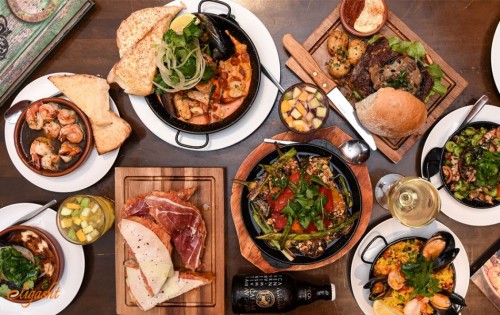
With its rich and varied culinary history, Spain has long-drawn foodies who want to learn more about the culinary arts. Spanish food is an explosion of tastes, customs, and culinary skills, from the flavorful paellas of Valencia to the salty tapas of Andalucia. Through the eyes of Spanish culinary schools, we delve into the fascinating process of learning the art of Spanish cuisine in this article.
A Culinary Tapestry: The Essence of Spanish Cuisine
Spain sits at a historical crossroads where a vast range of cultural influences have formed its gastronomic environment, giving rise to a distinctive and diversified gastronomy. Spanish culinary schools act as windows into this world, giving students the chance to discover the mysteries underlying the robust tastes, vivid hues, and sophisticated methods that characterize Spanish cuisine.
Esteemed Culinary Establishments: Molding Master Chefs
Spain is home to internationally recognized culinary schools that provide extensive curricula meant to turn budding cooks into master chefs. With a great balance of academic knowledge and practical experience, schools like Le Cordon Bleu Madrid and the Basque Culinary Centre prepare students for the challenges and innovation that the world of Spanish food demands.
Genuine Methods: From Conventional to Contemporary Expertise
Spanish culinary schools take great pleasure in imparting a deep understanding of traditional methods while promoting creativity in the kitchen. Students get the ability to harmonize authenticity and cutting-edge culinary talent by learning to balance the time-honored recipes of traditional Spanish cuisine with modern touches.
Regional Diversities: Examining Spain's Culinary Map
Every region of Spain has its own specialties and culinary traditions, reflecting the country's geographical diversity. Culinary schools frequently arrange immersive programs that give students a thorough grasp of Spain's culinary mosaic through market exploration, artisan producer visits, and hands-on cooking classes.
Developing Your Tapas Skills: A Cooking Ritual
Small savory meals called tapas that are meant to be shared are a mainstay of Spanish cuisine. The art of crafting these delectable pieces is highly valued in Spanish culinary schools, where students learn how to balance tastes and textures and develop an awareness of the communal nature of meal sharing.
Seasonality and Sustainability: Emphasizing Freshness
In Spanish culinary education, finding local, seasonal, and fresh ingredients is emphasized. This dedication to sustainability reflects the respect for the land and environment that is ingrained in traditional Spanish food, as well as current culinary trends.
Language and Cultural Immersion: Beyond the Kitchen:
Culinary students find that knowing a little bit of Spanish improves their ability to interact with locals and communicate efficiently in the kitchen. Language instruction and cultural immersion programs are frequently included in culinary schools, enabling students to fully experience Spanish cuisine and way of life.
To sum up, attending Spanish culinary schools and learning the craft of Spanish cooking is an unparalleled gastronomic journey. Students go on a trip that goes beyond recipes, from the vibrant markets to the cutting-edge kitchens, imparting a profound understanding of the cultural, historical, and regional elements that define the vibrant tapestry of Spanish food.